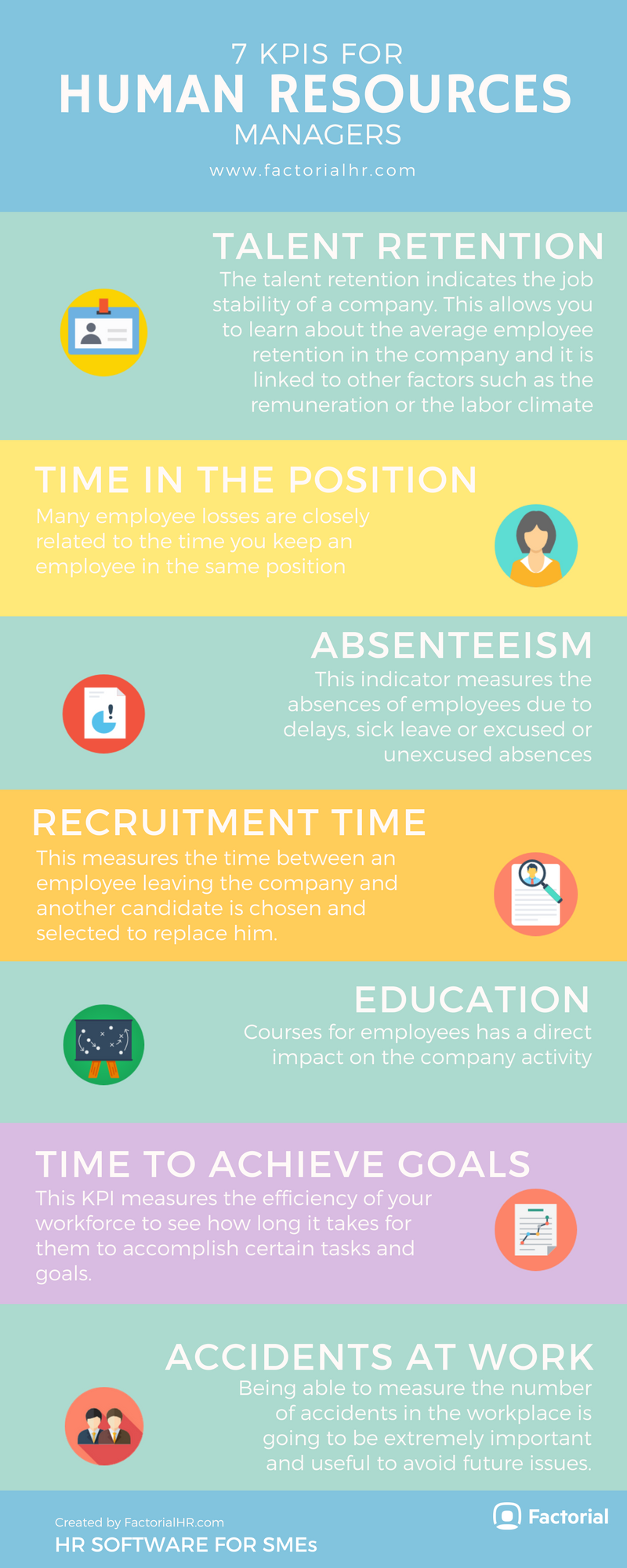It is very common to speak of KPIS in marketing and sales, but human resource managers are increasing the use of these indicators on their day-to-day work. In this article, we are going to be talking about the seven key indicators that are used for monitoring HR management in your company.
WHAT IS A KPI?
A Key Performance Indicator (KPI) is a metric that measures the performance of a particular activity or process. The objective is for this to serve as a reference depending on the process or activity on the basis of the objective you want to achieve.
Example: open rate of your newsletter: The % of individuals who open your newsletter will determine the relevance and quality of the content that you sent. Monitoring the open rate of each newsletter you send can help you evaluate the effectiveness of your posts depending on the goal you want to achieve.
CHARACTERISTICS OF A KPI :
• Concrete: The KPI should be tangible and it should have a specific goal.
• Measurable: If you cannot measure the KPI, it isn’t a KPI.
• Reachable: Stay realistic when defining KPI that will determine your success.
• Relevant: Monitor only the things that really matter, don’t waste time with indicators that do not contribute anything to your company.
THE MOST IMPORTANT KPIS IN HUMAN RESOURCES
• Retention of talent:
The retention of talent is a KPI that indicates the job stability of a company. This allows you to learn about the average employee retention in the company and it is linked to other factors such as the remuneration or the labor climate. In addition to the cost of losing an employee, the loss of talent will force you to spend time and money to recruit a new individual. An index of high staff turnover implies high costs for the employer. The rate of retention of talent is calculated by comparing the number of workers who joined the company in a specific period vs. those who stayed during the same period.
• Duration in the position:
Many employees’ losses are closely related to the time that they keep in the same position. If they feel they won’t be promoted, many employees tend to look for new opportunities outside of the company. You can calculate the average time it takes for an employee to ascend by counting the number of months it takes each employee with the same charge and dividing the result by the total number of employees in the company.
• Absenteeism:
this indicator measures the absences of employees due to delays, sick leave or excused or unexcused absences. This indicator can help predict the numbers you could be expecting. Based on the average value of the hour worked the impact of absenteeism in the company’s costs can be quantified.
• Average time for recruitment:
this measures the time between the announcement of an employee who is leaving the company and another candidate is chosen and selected to replace him. It is possible to optimize the average time of each new hiring but be careful; many factors may be included here.
• Education and training:
Courses for employees has a direct impact on the company activity. This KPI is meant to help boost the productivity levels of each employee by creating specific strategies to increase loyalty and satisfaction levels that employees feel when working with the company.
• Average time to achieve goals:
This KPI is going to measure the efficiency of your workforce to see how long it takes for them to accomplish certain tasks and goals that have been set for their position in the company.
• Accidents in the workplace:
being able to measure the number of accidents in the workplace is going to be extremely important and useful in order to avoid future issues.
Infographics- HR KPI metrics






0 Comments